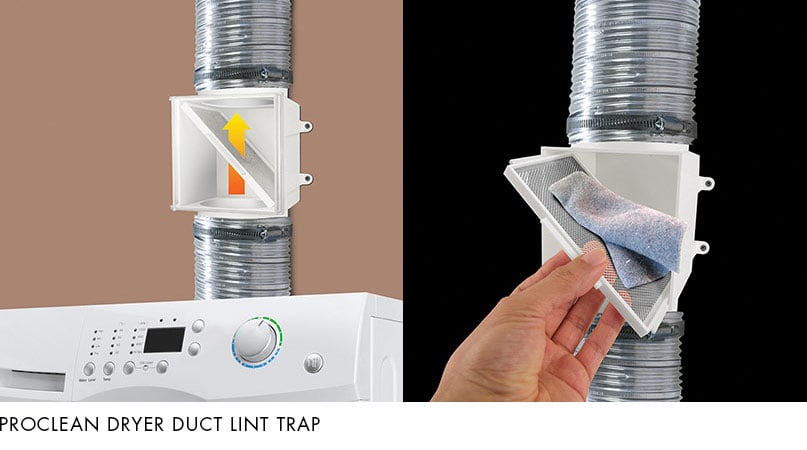Dryer Vent Installation and Maintenance
Educational Resources
North American-style household clothes dryers are required by manufacturers to be vented to the outdoors using a short length of rigid or flexible metal ducting. Manufacturers recommend that the maximum length of the metal ducting, which varies depending on the number of bends, should not be exceeded. This is clearly stated in the manufacturer’s installation instructions and the appliances are certified according to this requirement.
It is strongly recommended that plastic ducting not be used. Plastic ducts often collapse causing blockage and lint build up within the dryer. This type of plastic ducting can ignite or melt and will not contain a fire within the dryer.
Clothes dryers that are located in closet type spaces or totally enclosed rooms (e.g. in apartments) should have a minimum of 120 in² (775 cm²) opening into the closet/room for incoming air to ensure proper operation. A build up of lint in the dryer can result from the restriction of this air flow.
Some designs of clothes dryers are prone to lint build up if the exhaust is located at the top of the dryer. In this case, the lint has to move against gravity which increases the likelihood that it will accumulate within the duct or settle between the rotating drum and the dryer cabinet. Therefore, the vents and metal ducts should be inspected and cleaned on a regular basis.
It is extremely important to remove lint that accumulates between the rotating drum and the dryer cabinet during the normal operation of the clothes dryer. The inside of the dryer cabinet should be cleaned periodically by a qualified individual (i.e., an appliance repair technician) every two to three years, or more frequently, depending upon usage.
Clothes dryers that have long metal ducts with several bends containing in-line fans and filters require additional attention. This type of venting, which is often found in apartments, uses in-line fans as the ducts may exceed manufacturers installation specifications with several bends. To avoid lint accumulation in the bends of the ducts, the in-line fans must be operational and on during the drying cycle. Also, it is preferable that the in-line fans be dedicated only to the clothes dryers. Cleaning of these in-line filters should be conducted frequently.
DOs & DONT’s
- DO read the manufacturers Use & Care book regarding the safe use of the dryer
- DON’T dry chemical, oil or gasoline impregnated material or fabrics (i.e. mops and cleaning fabrics saturated with wax, flammable solvents or vegetable oils). Even after washing, these can ignite during the drying cycle
- DON’T dry natural or synthetic rubber, rubber coated sneakers, rain boots, foam pillows or any garment with foam padding (i.e. blouses with shoulder pads, bras, cycling shorts)
- DON’T dry garments cleaned with dry cleaning fluid. Dry only water washed articles



